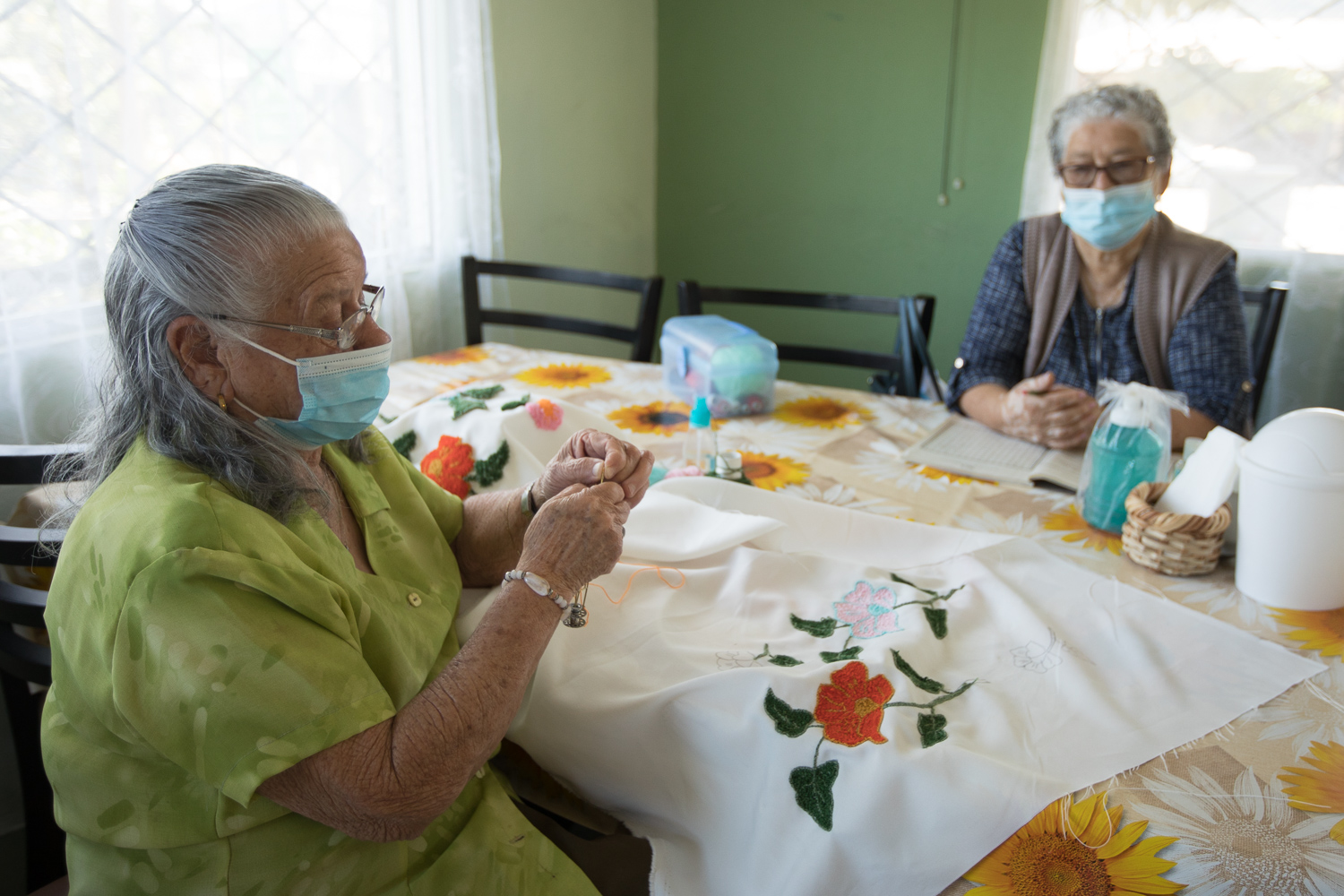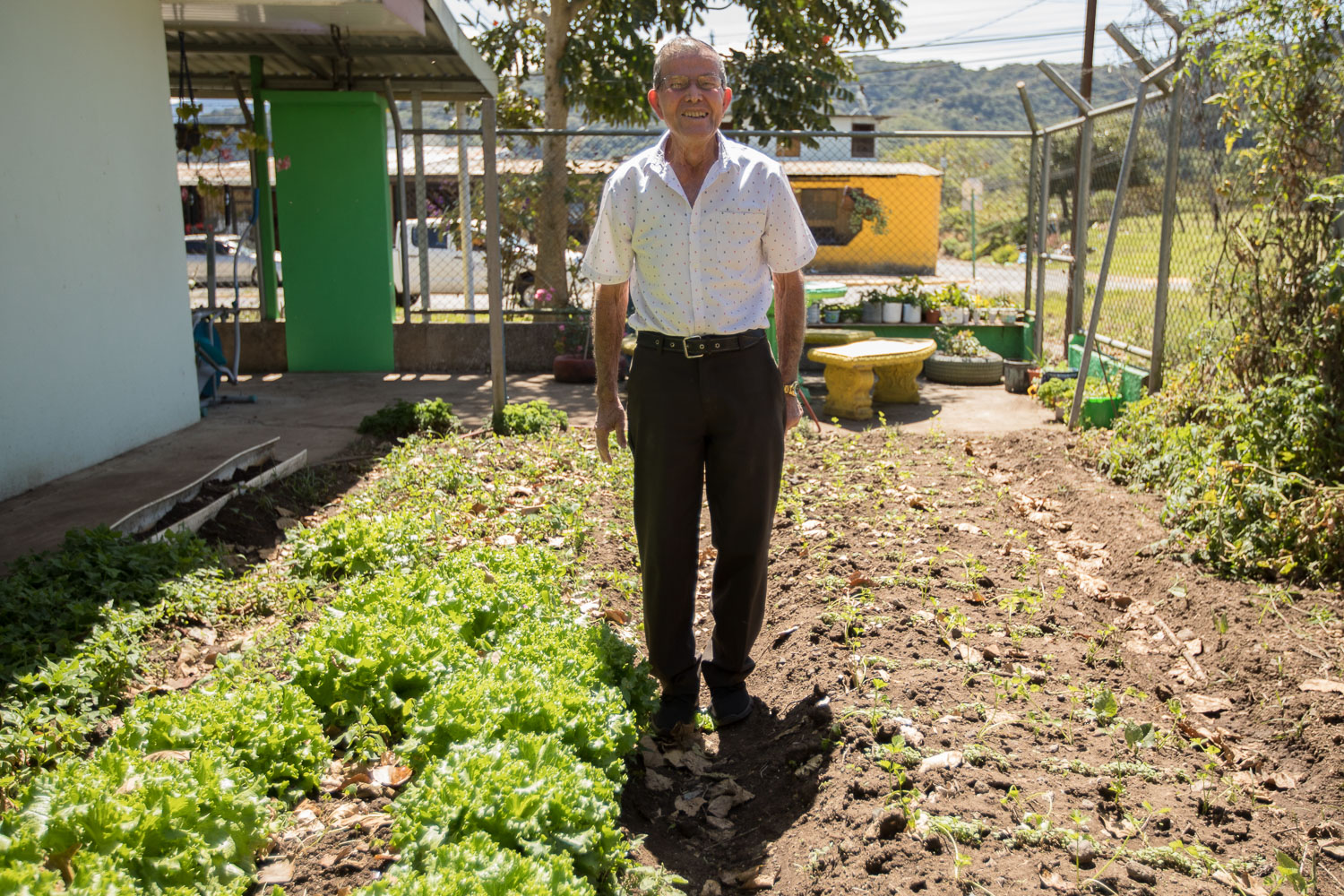Have you ever had to run across a busy street because there was no crosswalk? Or had trouble getting up the steep steps of a bus with lots of bags? Have you ever felt lonely or bored when there are no friends around?
What might these experiences be like for the elderly in Costa Rica—and what happens when Costa Rican cities decide to make life better for their older citizens?
That’s the question we set out to answer in our 2022 story “How can a city become age-friendly?” by Mónica Quesada Cordero, part of our edition “Long Live CR.” The story starts and ends with “doña Loly,” as María Dolores Coto Madriz, 81, is known. She founded a senior day center in Cartago and is now part of a huge effort to improve services for the elderly in Costa Rican cities around the country.
Here are some ideas and resources to use our free materials to spark a conversation about health at all ages with your kids, students, or adult book/discussion group. (For more information about our journalism, why it’s a good fit for discussion groups, and what other free resources we offer to support teachers and parents, click here.)

Step one: Share the story
We offer a wide range of options that you can mix and match, especially if you are working with language learners.
- Read (elementary students and/or early-stage language learners): Our Learners’ Edition, available in Spanish and in English, combines a short version of the story with lots of photos of life at the Cocorí Senior Center in Cartago. If you are using the Kid Edition with language learners, you’ll see vocabulary words at the start to help students along.
- Read (high school students, adults, and more fluent language learners): dive into the full story and photo essay in Spanish or English! For language learners, you could mix or match. Have students read one and then the other, or have them read the full story in their first language, and then read the Learners’ Edition in the language that is being learned.
- Listen: We read the full longform story aloud in both languages on two episodes of our podcast, El Colectivo 506. The full listen is ideal for older students, but excerpts could also be used with elementary students or for language practice. For language practice, we recommend combining the story and podcast. The podcast, El Colectivo 506, is available wherever you listen to podcasts; here are the Spotify episode links in Spanish and English.
Step two: Discuss the story
Here are some discussion questions, starting with more basic questions for younger kids / early-stage language learners, and moving up.
Introductory questions
(Particularly ideal for younger kids and/or early-stage language learners)
- Who are the oldest people in their family? What are their names? Where do they live? What is it like when you spend time with them?
- Do those people ever help you do things that are hard for you? And do you ever help those people to do things that are hard for them?
- The story talks about things that doña Loly and other people are doing for older people, like activities, training, safer streets and sidewalks. Think about what is in your neighborhood: streets, parks, buses. What is in your neighborhood that is helpful for older people? What could be improved?
- Do you know of anyone who is making improvements? If not, who are people who could do those things?
- Do you know anyone like doña Loly who started a project in response to a problem s/he saw? Have you ever done that?
More complex
-
- In the story, doña Loly says that there is a “lack of love” towards older people in Costa Rica. Do you think this is the case?
- How do you see yourself as an older person? What do you hope your life will be like? What worries you about what might be difficult as an older person?
- If you are a senior citizen: how would you describe your experience of aging to a younger person? What has been surprising, challenging, satisfying?
- What challenges do you see for older people in your family/broader community? Think about infrastructure, social connections, activities, and the other elements in the story.
- Have you seen any entities responding to these challenges in your community? What do you know about that effort? Think about the elements of REAL solutions journalism (how the response works, evidence of impact, lessons learned that others could adopt, and limitations).
- What kinds of stories would you like to hear about aging in your community? If you had a team of journalists in front of you, what would you like them to go out and study / document?
- Media literacy: What sources does the journalist rely on in this story? Where does she get her statistics and information? How is she double-checking or verifying the accuracy of the information that, for example, the municipalities are providing?
Step three: Try an activity
Younger kids
-
- What do you think an “age-friendly city” looks like? What should it have: streets, parks, trains, places to do things? Let’s draw one!
- How do you imagine yourself when you are older, like doña Loly? Do you think you would like to start a club or a place to gather with friends, the way she did? What activities would you like to do there—gardening, playing music in a band, playing games, writing a book? Draw it.
- Make a card for the elderly people in your family or community showing what you wish for them… then give them the card.
- Invent a song where you tell the elderly people in your community and family that they are not alone. What do you think you can say to cheer them up?
Older kids / adults
-
- Write a letter to your municipality about the story. What do you think they should know about age-friendly cities? What is age-friendly in your neighborhood? What could be improved?
- Interview a senior citizen in your family or neighborhood: tell that person about the story and ask them what works well for them in their neighborhood, and what makes life more challenging. What changes would this person like to see?
- Make a video using your phone simulating what older people have to deal with in your city (say, getting on a bus) and how you would like that situation to change. Edit the video and share it on your social media (tag @elcolectivo506 so that we can see it and share it as well!).
- If you know of elderly people in your community who might be feeling lonely, what would you like to say to them? Write out some pointers and share it with the group. After discussion, consider sending them an audio or a text.
- Write a letter to “older you” and tell yourself what you wish for you to be like when you are a senior citizen.
Step four: Tell us how it went!
We are testing various approaches to the use of our materials in classrooms and families, so your feedback will be very valuable to us. Did you try any of these steps, or others, with your children or students? Please let us know how it went (photos, videos, and student work are all very welcome) and what you suggest! Contact us at [email protected] or via WhatsApp at 8506.1506.
More resources for educators and discussion groups:
Host a solutions journalism circle: a quick-start guide for all ages





